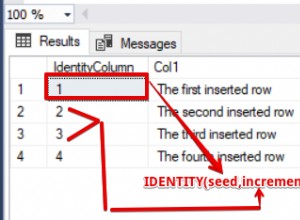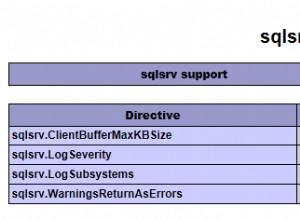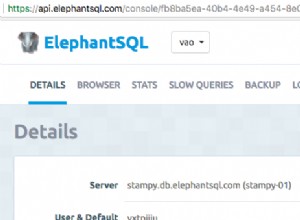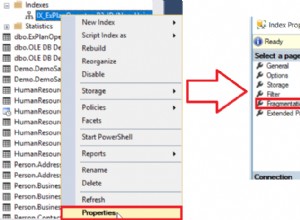Você está recebendo todos informações na tabela para esse ID de produto e, em seguida, tentar exibi-lo como uma imagem. Você precisa acessar a imagem do array de resultados ou
SELECT apenas a imagem, por exemplo use get_var em vez de get_results e selecione img em vez de * :$product_id = get_query_var('id');
$image = $wpdb->get_var("SELECT img FROM products WHERE id = ".$product_id);
A propósito, isso deixa você aberto à injeção de SQL, então você realmente deve usar
$wpdb->prepare para incluir uma variável em sua consulta, por exemplo $image = $wpdb->get_var(
$wpdb->prepare("SELECT img FROM products WHERE id = %d", $product_id)
);
Limitação de tamanho do BLOB
Observe que um BLOB em MYSQL é limitado a 64kb. Se suas imagens forem maiores que isso, você precisará usar um MEDIUMBLOB de 16 MB
Salve o caminho da imagem em vez de diretamente no banco de dados como um BLOB
Uma solução mais prática é salvar apenas o caminho.
Para fazer isso, você precisará criar uma pasta para enviar as imagens (por exemplo, no meu código abaixo, está na raiz da web e chamada
myimages ), e uma nova coluna VARCHAR ou TEXT em seu banco de dados (chamada img_path no exemplo abaixo). /* 1. Define the path to the folder where you will upload the images to,
Note, this is relative to your web root. */
define (MY_UPLOAD_DIR, "myimages/");
$imagefilename = basename( $_FILES['image']['name']);
/* 2. define the full path to upload the file to, including the file name */
$fulluploadpath = get_home_path(). MY_UPLOAD_DIR . $imagefilename;
$image_name = strip_tags($_FILES['image']['name']);
$image_size = getimagesize($_FILES['image']['tmp_name']);
/* 3. Do your validation checks here, e.g. */
if($image_size == FALSE) {
echo 'The image was not uploaded';
}
/* 4. if everything is ok, copy the temp file to your upload folder */
else if(move_uploaded_file($_FILES['image']['tmp_name'], $fulluploadpath )) {
/* 5. if the file was moved successfully, update the database */
$wpdb->insert(
$table,
array(
'title' => $title,
'description' => $description,
'brand' => $brand,
'img_name' => $image_name,
'img_path' => MY_UPLOAD_DIR . $imagefilename, /* save the path instead of the image */
)
);
} else {
//Display an error if the upload failed
echo "Sorry, there was a problem uploading your file.";
}
Para recuperar a imagem do banco de dados e exibi-la:
$product_id = get_query_var('id');
/* query the database for the image path */
$imagepath = $wpdb->get_var(
$wpdb->prepare("SELECT img_path FROM products WHERE id = %d", $product_id)
);
/* 6. Display the image using the path.
Because the path we used is relative to the web root, we can use it directly
by prefixing it with `/` so it starts at the webroot */
if ($imagepath)
echo '<img src="/'.$imagepath.'" />';
O código acima não foi testado, mas a ideia básica está lá. Além disso, não funcionará se já existir um arquivo com o mesmo nome, portanto, considere adicionar um carimbo de data/hora ao nome para torná-lo exclusivo.
Referência :




